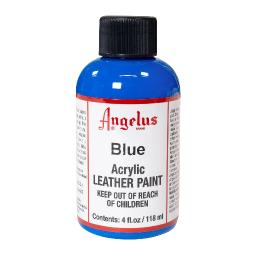Stats
Love Given: 0
Posts: 0
Badges
Acrylic Paint Additives: What They Are & How to Use Them for Stunning Effects

Acrylic painting is a versatile and creative medium, but to truly unlock its potential, artists often turn to specialized acrylic paint additives . These powerful enhancers can modify the texture, drying time, flow, and finish of acrylic paint, allowing you to create stunning visual effects that wouldn’t be possible with paint alone. Whether you're looking to add depth, extend drying time, or achieve a glossy finish, understanding how to use acrylic paint additives can elevate your artwork to a whole new level.
What Are Acrylic Paint Additives?
Acrylic paint additives are liquid or gel-based substances designed to alter the properties of acrylic paint. Unlike traditional acrylic mediums, additives do not contain binding agents, meaning they modify the paint without affecting its adhesion to surfaces. These products help artists achieve a variety of effects, from increasing fluidity for paint pouring to adding texture for a more dynamic surface.
Types of Acrylic Paint Additives and Their Uses
To make the most of acrylic paint additives, it’s essential to understand their different types and how they influence paint behavior.
1. Flow Improvers (Flow Aid)
-
Purpose: Enhances the flow of acrylic paint without diluting its pigment.
-
Best For: Fine details, glazing techniques, and airbrushing.
-
How to Use: Mix a few drops into your acrylic paint to create a smoother application and prevent streaks.
2. Retarders (Slow-Drying Mediums)
-
Purpose: Extends the drying time of acrylic paint, allowing for easier blending.
-
Best For: Layering, soft blending, and wet-on-wet techniques.
-
How to Use: Mix with paint in small amounts to slow drying without weakening the paint’s integrity.
3. Texture Gels & Pastes
-
Purpose: Adds thickness and texture to acrylic paint, creating a three-dimensional effect.
-
Best For: Impasto techniques, mixed media art, and textured backgrounds.
-
How to Use: Apply directly to the canvas before or after mixing with paint for varied effects.
4. Gloss and Matte Mediums
-
Purpose: Adjusts the sheen of acrylic paint for either a glossy or matte finish.
-
Best For: Customizing the final look of a painting.
-
How to Use: Blend into acrylic paint before application or use as a finishing layer.
5. Pouring Mediums
-
Purpose: Improves paint fluidity for acrylic pouring techniques.
-
Best For: Creating marbled, cell, and fluid art effects.
-
How to Use: Mix with acrylic paint to achieve the right consistency for pouring without cracking.
Tips for Using Acrylic Paint Additives Effectively
-
Start with Small Amounts – Always begin with a small amount of additive to see how it affects the paint before adding more.
-
Mix Thoroughly – Ensure even blending to prevent inconsistencies in texture and flow.
-
Experiment on a Test Surface – Before applying the paint to your final artwork, test it on scrap material to see how it behaves.
-
Choose the Right Surface – Some additives work best on primed canvas, wood, or specialty paper, so select your surface accordingly.
-
Follow Manufacturer Instructions – Different brands may have specific mixing ratios, so always check the label for best results.
Conclusion
Using high-quality acrylic paint additives can dramatically transform your artwork, giving you greater control over texture, drying time, and effects. Whether you’re a beginner exploring new styles or a professional artist seeking to enhance your techniques, incorporating these additives into your creative process can lead to extraordinary results. Experiment with different combinations to discover what works best for your unique artistic vision, and watch your acrylic paintings come to life like never before.












